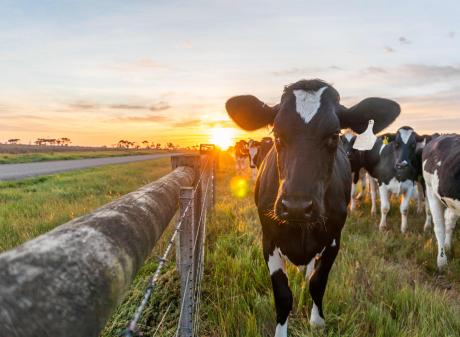
A new oat variety featured at the 19th annual oat industry field day on a Southland farm is named after the family hosting the event.
New Zealand Oat Industry Group chairman Graeme Gardyne hosted about 60 people on his 500ha family farm Viewbrae in Chatton, north of Gore.
Cropping covered about a third of the property and mostly sheep grazed the rest.
Crops include oat trials for Plant Research New Zealand, including a new variety named Gardyne.
About a year ago, Plant Research renamed a new milling oat cultivar from PRL 12-10-2 to Gardyne, in recognition of the contribution of the Gardyne family to the New Zealand oat industry.
Five generations of the family have grown oats near Gore, since settling in the area in 1876.

His son Richard manages the grain yard and son Michael runs the diverse cropping operation.
Oats were sown late this season due to a wet spring.
Patience was a key ingredient of growing oats, he said.
"Wait but be organised so when the time is right you do get it in," Graeme said.
"The weather we are getting now is bringing them forward and we won’t be late."
A grain grower needs to work with the season rather than against it and it always worked out, he said.
His brother, John Gardyne, and his family grow crops and run livestock on about 1200ha nearby.

"They are dead scared that if they produce something from a different variety, it will taste different and the consumer won’t like it."
Harraway & Sons chief executive Henry Hawkins said consumers could be eating porridge featuring Gardyne oats in two years.
More milling trials on three new oat varieties — Gardyne, 161-1 and 5-3-9 — would run this season and next and then a decision would be made on which one to introduce to the mill in Dunedin.
The oat variety needed to work for farmers, Harraways and consumers, he said.
So far, he was happy with the nutritional value of the Gardyne oat.
The oat variety currently used at Harraway & Sons was L5.
A decision would be made to either use L5 and some of the new variety or "go boots and all" and use just the new variety, Mr Hawkins said.

Consequently, the variety was rejected by Harraways.
However, it was bought by another company to produce oat milk.
Plant Research principal plant breeder Adrian Russell, of Christchurch, said if the Gardyne variety did not work for food producers then it was not a viable option.
The oat trial plots were aiming to improve grain yield, grain quality, disease resistance and plant resilience.
Plant Research staff produce new oat varieties by crossing them in a glasshouse in Templeton, Canterbury.
The most promising plants with phenotypic and genotypic stability were selected for plot trials in Southland.
Growing oats in Southland provided better selection pressure for a new crop than was possible in Canterbury.

"It is a very unique environment."
A Plants Variety Rights protection application had been lodged for the Gardyne variety this season.
"It is important we protect the genetics we are investing in because it is an expensive exercise to develop varieties and we have to look after them."
The Gardyne variety had been tested for six seasons.
When compared to the commercial oat variety L5, the Gardyne variety had a higher yield and flowered earlier.
"Every year we have tested it, Gardyne’s been better."
The Gardyne variety had a better tolerance to the barley yellow dwarf virus .

"That’s the first time we’ve had a variety that’s been the highest yielding in autumn and spring trials, which makes it unique, but it has to get through and tick all the boxes."
A new variety was expected to be released commercially every four to five years.
"There’s never a guarantee with plant breeding — you try and make a sensible cross and sometimes they work and some times they don’t."
Producing oat varieties which mature at different times helped growers spread the risk between autumn and spring planting.
A concern of relying solely on oat variety L5 was if the environment changes it might no longer be suitable, and growers would find themselves in "big trouble".
"Having options is a good thing."















